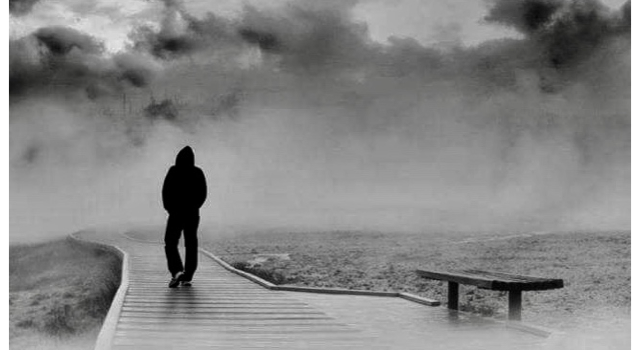Six water companies overcharged customers between £800million and £1.5billion by “significantly or systematically” under-reporting the…

A Life Of Poverty And Toil.
What was life like for ordinary women living in Britain before the development of a national health service, a social welfare system and modern household appliances?
All women in 1910, irrespective of social class background, were seen as second-class citizens – a fact underlined by the denial to them of the parliamentary vote.
And all women were encouraged from childhood to strive to the ideal of serving others, to consider the interests of their menfolk first rather than their own.
Since most women were expected to become full-time wives and mothers, rather than earn their own living, options in life were limited.
This was especially so for ordinary, working-class girls and women who had fewer choices than their middle-class sisters and lived lives of toil and drudgery.
Working-class girls who attended state elementary schools were taught a limited curriculum.
Lessons focused on the 3 Rs (reading, writing and arithmetic), a little geography and history, and a large chunk of domestic subjects, such as needle-work, house management, cookery, laundry work and childcare.
Although the age of compulsory school attendance had been raised to 14 in 1899, many working-class girls left a year earlier, on possession of a labour certificate to enter dead-end, poorly-paid jobs, especially in domestic service.
Marriage became a practical necessity for working-class women, few of whom wanted to be left on the shelf.
Once married, working-class husbands were usually against their wives going out to work, believing that a family wage was the way to earn respectability.
But most wives lived in a cycle of poverty, especially in urban areas where working-class families lived in damp, dark, over-crowded tenements infested with bugs.
Keeping a damp tenement clean was hard work, and all done by manual labour.
Few husbands helped with housework, shopping or childcare.
Since the only heating was by open fire, the grate had to be cleaned daily and scuttles of coal brought up and down stairs from the basement.
Washing was a particular chore since there was no hot water, only a cold tap, usually shared.
Water had to be heated in a copper pan for washing clothes in a ‘dolly tub’ and children would be given a bath in a tin tub, once a week, before the fire.
Few homes had indoor lavatories.
Most working-class wives were ignorant about birth control and had to manage a household of six children and two adults on a pound a week.
After rent of 7 shillings (35 pence) was paid out, only 13 shillings (65 pence) was left for food, coal, gas, clothes, cleaning materials, burial insurance and savings.
Such conditions took their toll on the health of all the family, but women were hardest hit.
Even when pregnant, a wife might live on bread and jam.
Often the soon-to-be-born baby died young.
“No one but mothers who have gone through the ordeal of pregnancy half-starved, to finally bring a child into the world, to live a living death for nine months, can understand what it means”, wrote one sad mother from those times.
Girl Guides.
In 1909, while the Pankhurst family was causing sleepless nights for a suffrage-resistant Liberal Prime Minister, H H Asquith, the Boy Scout movement was already two years old.
That year, General Robert Baden-Powell – or The Chief, as the Scouts’ 55 year-old military founder was affectionately known – held a Scout’s rally at Crystal Palace and was astonished to find that a handful of girls had turned up, bandages stuffed into their rucksacks, just in case they came across anyone who needed emergency first aid.
When asked “what the dickens” they were doing, they replied firmly that they were Girl Scouts.
A year later the Girl Guides were given official status, a movement born out of that spirit of feisty resilience that reflected the mood of so many female adults of the time.
Baden-Powell’s cheery 23 year-old wife Olave threw all her considerable energy into their cause, explaining that a practical training not just in sewing and nursing but also mechanics and carpentry, presented them with an unprecedented way of living ‘where women could face the world on equal terms with men, where they would be trained and equipped to cope with whatever emergencies might arise’.
John Brown.
On October 16, 1859, in an attempt to end slavery, John Brown led 21 men on a raid of the Federal Arsenal at Harpers Ferry, Virginia, USA.
His plan to arm the slaves was thwarted and most of his men killed or caught.
John Brown was hanged on December 2nd that year.
The Slaughter Of Unborn Girls.
In the cruel old China, baby girls were often left to die in the gutters.
In the cruel modern China, they are aborted by the tens of millions, using all the latest technology.
Thanks to a state policy which has limited many families to one child since 1979, combined with an ancient and ruthless prejudice in favour of sons, the world’s new superpower is beginning the century of its supremacy with an alarming surplus of males.
By the year 2020, there will be 30 million more men than women of marriageable age.
Men without women are altogether more troublesome than women without men, especially when they are young.
All kinds of speculation is now seething about what might happen.
A war to cull the surplus males, a rise in crime, a huge expansion in the prostitution that is already a major industry in every Chinese city, an increase in rape and sexual assault, a rise in homosexuality.
The Chinese state, never having intended this result and increasingly alarmed by it, is now using all its huge propaganda resources to try to stop the slaughter of unborn girls.
But it will be hard to fight against the cold hard prejudice in favour of sons and against daughters, rooted in a prehistoric belief that sons will care for their aged parents while daughters will cost money in dowries, and desert to the families into which they marry.
There is now a miserable trade in stolen children.
Parents are putting their children in cages or tying them to posts, trying to prevent them from being stolen.
Boys are kidnapped by families who want a male heir and do not care where they get him.
Girls are taken to be brought up as child brides for cherished, spoiled boys, who will not have to worry about the increasing shortage of girls.
This danger is one that China’s censored state prefers not to talk about.
The Great Stink.
Sir Joseph Bazalgette was Chief Engineer of London’s Metropolitan Board of Works in the 1850s, when sewerage problems led to what was called The Great Stink.
Cholera was rife.
His answer was to build 83 miles of primary sewers, 1,100 miles of street sewers and 13,000 miles of smaller sewers, all underground.
He also did one fabulous thing.
He decided that whatever calculations he made for the flow of sewage, he would double them, for the future.
And had he not done that, by 1950 we would have had the same problem again.
Martian Invaders Land In USA.
On the night of October 30, 1938, American radio listeners were stunned to hear breathless eye-witness accounts of Martian invaders landing in New Jersey, USA.
Panic ensued, and there were reports of people jumping into their cars and fleeing for the hills.
Hysteria gave way to outrage when it transpired that the broadcast had been nothing more than a dramatic adaptation of H G Well’s science-fiction master-piece The War Of The Worlds, conceived by up-and-coming young director Orson Welles.
That 1938 radio broadcast is still celebrated as a dazzling achievement.
Not only did H G Wells conjure up literature’s first alien invasion, he also created most of the staples of science fiction.
There’s time travel (The Time Machine), invisibility (The Invisible Man) and man playing at God and nature (The Island of Doctor Moreau).
Where would Hollywood be without him?
A Bride At Thirteen.
Piano-pounding American rocker Jerry Lee Lewis caused uproar by marrying his 13 year-old cousin.
Lewis, born in Louisiana, was 23 when he married Myra Gail Brown in December 1957.
They both claimed she was 15, believing that was sufficiently mature.
But their secret was discovered ahead of Lewis’s British tour the following year, leading to cancelled concerts and a radio ban.
The scandal put the skids under Lewis’s career for a decade.
Myra divorced Lewis, who has wed six times in all, in 1970 amid claims of abuse.
Children Poisoned By Arsenic.
In 1857 five children died when their mother put arsenic instead of flour in a rhubarb pudding.
Another family were poisoned when their Sunday roast was sprinkled with the same substance, and a baby was killed after being covered in what the mother thought was baby powder.
They were just a few of the thousands who perished in the 19th century when the so-called arsenic panic swept the nation.
As a cheap by-product of the mining industry, arsenic was easily available and sold in vast quantities by grocers as rat poison.
The tasteless white powder was often stored in the kitchen and mistakenly used as flour, unintentionally killing whole families.
Others had more malicious motives and disposed of their unwanted husbands (arsenic was the favoured poison of women) by stirring a few grains into cups of tea or dinner.
Just one-hundredth of an ounce was enough, and it was the perfect murder weapon because the symptoms were similar to dysentery.
Children died in their thousands because books were bound with arsenic paper and toys painted with lethal colour.
Even the interior of the house could kill.
Arsenic was used to create vivid greens, so paints, wallpapers and curtains all exuded the deadly poison.
Fashion was equally dangerous.
Green muslin was so daubed in arsenic that waltzing ladies would spread clouds of poison across Britain’s ballrooms.
Pirates On The River Thames.
Piracy centred on three Barbary states in North Africa.
Tunisia, Tripoli and Algiers, from which sailors set out on raiding expeditions around the Mediterranean.
Ships would be boarded, cargoes seized and the crew sold into slavery.
The pirates grew so confident that they even started raiding the southern English and Irish coasts, looking for a chance to grab women and children and take them back to North Africa.
In the 1620s, Moroccan pirates actually sailed up the Thames looking for human booty and rogue ships were spotted in the Severn Estuary.
During one particularly terrible night in 1631 more than 100 people from the seaside town of Baltimore, County Cork, were seized and dragged away to Algiers.
And in 1641 pirates raided Penzance, in Cornwall, and carried off 60 men, women and children.
Fake Olive Oil Killed 800 People.
In Spain in 1981 more than 20,000 people were poisoned by fake olive oil made from rapeseed oil that had been treated with a highly toxic compound used to make plastics.
An estimated 800 people died.
The rules have supposedly been tightened since then, but olive oil production is so profitable that many big makers simply flout the regulations.
Profits are comparable to cocaine trafficking, with none of the risks.
It’s no surprise to learn that in Italy the Mafia are involved in olive oil scams which involve adulterating premium oil with inferior produce, then chemically treating it to disguise its true nature.
From the Nineties onwards, the entire Italian production chain became, in effect, one huge criminal network.
They get away with it with a mixture of corruption, official indifference and a hefty dose of intimidation.
Andreas Marz, a Swiss olive-oil expert ran scientific tests on commercially produced oils.
In every case, he found those sold as extra virgin were nothing of the sort.
But when he published his findings he was taken to court by one of the companies he had named and shamed.
Had the case gone against him he would have lost his home and his business.
In the event, the judge decided in Marz’s favour, and his ruling amounts to a damning indictment of the company’s bully-boy tactics.



This Post Has 0 Comments